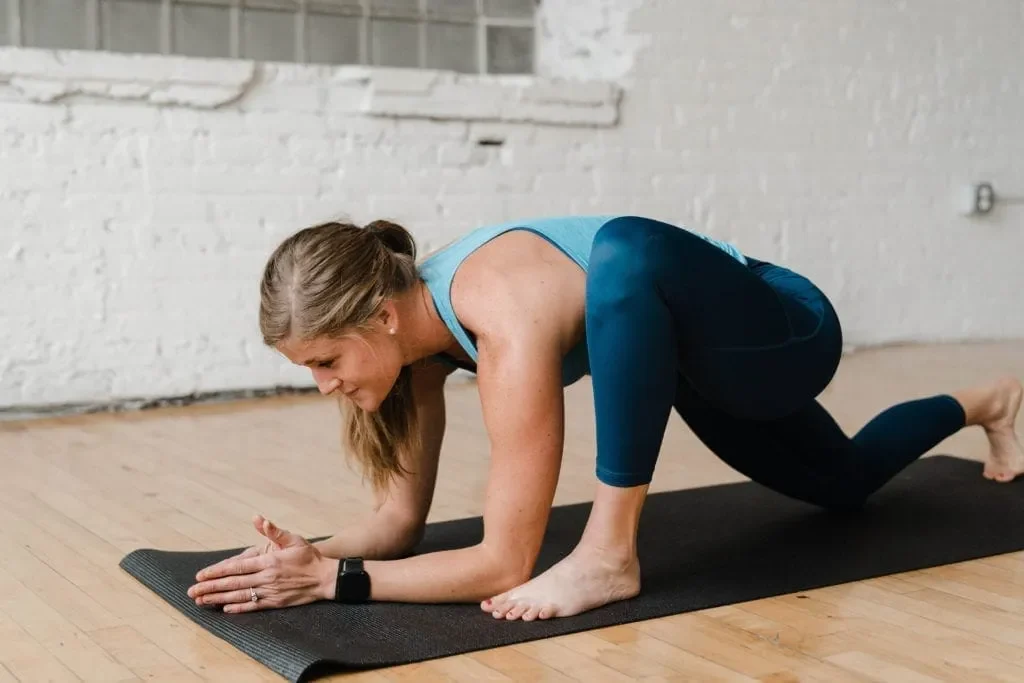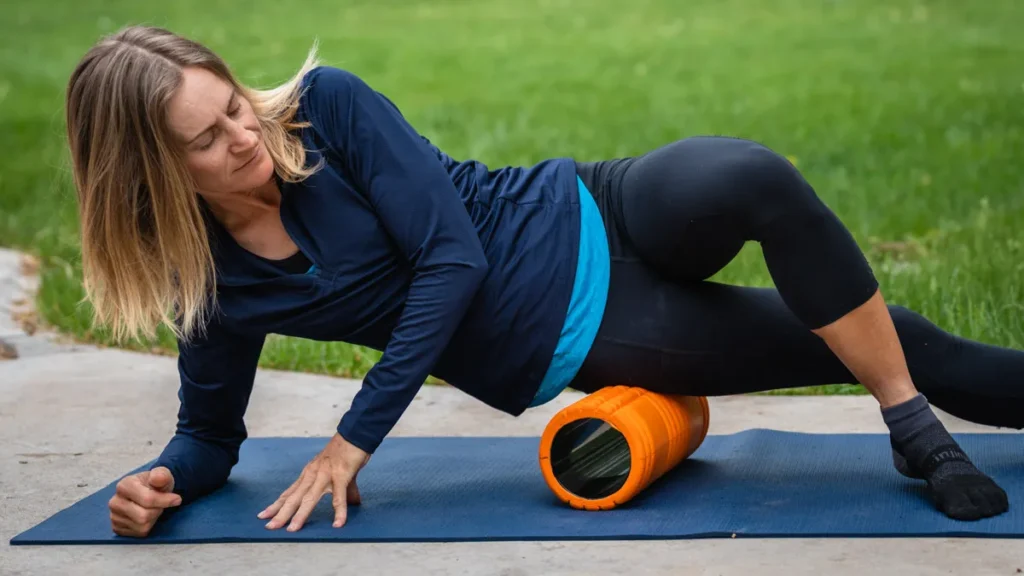The Ultimate Guide to Fitness Recovery in 2025: Science-Backed Methods That Actually Work

Did you know professional athletes sleep 10 hours or more each night? They do this to help their bodies recover after intense training. Many fitness enthusiasts might find this surprising. Your progress depends more on what happens between workouts than during your training sessions. This is why recovery for athletes is crucial in achieving peak performance.
Research proves that recovery matters just as much as the actual training to maximize your performance and health. Your muscles need 24 hours to three days to recover properly, based on how intense your workout was. Many people skip this vital part of fitness, which can limit their results and lead to overtraining. Understanding why recovery is important can significantly impact your fitness journey.
This piece explains the science-backed methods that work for recovery. You’ll learn exactly what your body needs to rebuild and get stronger after each workout session, focusing on effective sports recovery techniques.
Mastering the Basics: Sleep and Nutrition for Recovery

Your fitness recovery doesn’t just happen during intense training sessions. The real work takes place outside the gym. Quality sleep and proper nutrition form the foundation of recovery, emphasizing the principle of rest and recovery in athletic performance.
Why sleep is the foundation of muscle repair
Sleep puts your body into repair overdrive, highlighting the importance of sleep and muscle recovery. Your body releases human growth hormone, which is a vital part of muscle repair and growth. This hormone kicks off protein synthesis, where your body repairs damaged muscle fibers and builds new tissue. Research shows that poor sleep can alter a lot of blood hormones and cytokines linked to skeletal muscle recovery.
Your hormonal balance depends on sleep quality. Studies show that a lack of sleep raises cortisol (the stress hormone) and changes the cortisol/testosterone ratio, which can slow muscle growth. Bad sleep also disrupts testosterone release, a key muscle-building hormone that your body releases mostly during sleep. Understanding how sleep helps muscle growth is crucial for optimizing recovery.
Sleep does more than regulate hormones. It helps reduce inflammation, too. Hard workouts cause tiny muscle tears and inflammation. Your body’s anti-inflammatory cytokines get to work during deep sleep. They reduce inflammation and speed up healing. Not getting enough sleep raises proinflammatory cytokines like interleukin-6 (IL-6), which slows down recovery. This process of muscle repair during sleep is essential for athletes and fitness enthusiasts alike.
How protein and carbs support muscle recovery
Protein gives your body the amino acids it needs to fix and rebuild muscle tissue. You should eat 0.25–0.5g of protein per kg of body weight in each meal, spread across four meals. Sports nutrition experts recommend 20-40g of protein every 3-4 hours. This helps improve muscle recovery after a workout and body composition.
Your body needs carbs to refill muscle glycogen—the main energy source used during workouts. Research suggests eating carbs at 1.2g/kg/hour in the first four hours after exercise maximizes glycogen synthesis. Notwithstanding that, you can achieve similar results with fewer carbs (0.9g/kg/hour) plus protein (0.3g/kg/hour).
This combo works because protein boosts insulin effects, which helps muscles absorb more glucose. The amino acids in protein trigger insulin release, making it easier for muscles to take in carbs. Understanding these macronutrients and their role in recovery nutrition for athletes is key to optimizing post-exercise recovery.
Timing your meals for optimal recovery
Your meal timing can make a big difference in recovery. Experts call the post-workout period the “anabolic window”—a time when increased blood flow and insulin sensitivity help glucose uptake and glycogen replenishment.
Here’s how to get the most from your recovery:
- Have a meal within 60 minutes after hard training
- Include both protein and carbs in this meal
- Eat carbs as soon as you can after exercise for extended recovery (1-5 hours), ideally within 1-2 hours
- Space out carb-rich meals every 2-3 hours for long-term recovery (8-48 hours)
Quick post-workout meals can include yogurt with fruit, a peanut butter sandwich, low-fat chocolate milk with pretzels, or a recovery smoothie. The key is getting protein and carbs into your system right after exercise. This helps muscle protein synthesis and speeds up recovery. These are some of the best foods for muscle recovery that you can easily incorporate into your diet.
Between workout days, stick to regular meal times with balanced nutrients. Your body will then have all the building blocks it needs to repair and adapt. This nutrient timing strategy is crucial for effective exercise recovery.
Hydration and Recovery: What You Need to Know
Water makes up 55-65% of your body weight, which makes hydration the life-blood of fitness recovery. Your hydration levels affect everything from muscle repair to joint health. Many fitness enthusiasts don’t realize how important it is to recover, especially when it comes to hydration for muscle repair.
How dehydration slows down recovery
A slight drop in hydration can really hurt your recovery potential. A loss of just 2% of your body weight in fluid substantially reduces your strength by 2%, power by 3%, and high-intensity endurance by 10%. This happens because dehydration cuts blood volume, which makes your heart work harder to deliver oxygen and nutrients to muscles.
Dehydration creates several roadblocks to recovery at the cellular level. Less blood flows to your active skeletal muscles when you’re dehydrated. This means damaged tissues get fewer nutrients they need for repair. Your body also doesn’t deal very well with removing metabolic waste products like lactic acid that build up during intense exercise.
Recovery from eccentric contractions takes a bigger hit, especially when you have dehydration – these are the type behind the most common muscle injuries. Studies show that dehydrated individuals get more symptoms of Delayed Onset Muscle Soreness (DOMS) than those who stay well-hydrated. Dehydration also makes osmotic stress and hyperthermia worse, which can make recovery take longer.
Warning signs of dehydration include:
- Dark yellow urine (instead of pale straw color)
- Decreased frequency of urination
- Muscle cramping and increased soreness
- Fatigue and decreased performance
- Headaches or dizziness
Water vs. sports drinks: when to use each
We picked water or sports drinks based on how long and hard we worked out. Water is all you need for workouts under 60 minutes. Plain water is essential for daily hydration and works best before, during, and after shorter or easier activities.
Sports drinks differ from water by providing electrolytes (mainly sodium) and carbohydrates. These drinks have specific jobs: sodium keeps fluid in your body and makes you thirsty, while carbohydrates give you energy during long workouts. Research proves that taking carbohydrates through sports drinks can boost performance, particularly in training sessions longer than 60-90 minutes.
For optimal recovery hydration:
- For workouts under 60 minutes: Water should be your main hydration source.
- For intense activities exceeding 60 minutes: Sports drinks with 6-8% carbohydrate concentration and about 200mg of sodium per 16-ounce serving work best.
- Post-workout strategy: Drink 24 ounces of water for each pound you lost during activity.
- Rehydration timing: Take 16-24 ounces of fluid within two hours after exercise to recover better.
Sports drinks shouldn’t be your everyday choice, despite their benefits. Most contain too much sugar, which adds unnecessary calories and can wear down tooth enamel. Drinking too much plain water during very long exercise can also thin out your electrolytes, which might lead to hyponatremia.
Good hydration throughout your day builds the foundation for effective recovery. Your urine color gives you a simple but reliable way to check your hydration – it should be pale yellow rather than dark or concentrated. Maintaining proper electrolyte balance is crucial for optimal recovery and performance.
Active Recovery Techniques That Actually Work

Most people think complete rest is best after intense training. But science shows a different approach works better. Active recovery – moving gently between workouts – helps your body bounce back faster and more effectively. This is where the concept of an active recovery workout comes into play.
What is active recovery, and why does it matter
Active recovery means keeping your body moving instead of sitting still. Think of it as staying in motion while recovering – doing activities at less than 50% effort that keep your blood flowing without stressing your body. This approach is crucial in understanding why rest days are important and how they contribute to overall fitness improvement.
Research proves active recovery works better than just resting. Runners who tried this method could run three times longer in their next workout compared to those who just rested. The results look even better for swimmers who used active recovery – they cleared out 68% of accumulated blood lactate that usually causes fatigue.
The benefits go beyond just improved performance:
- Blood flows better, bringing oxygen and nutrients to damaged tissues
- Your body removes waste products faster
- Less inflammation and muscle soreness
- Better range of motion and flexibility
- Your endurance stays strong
Best active recovery exercises for rest days
The sweet spot for active recovery keeps your heart rate above resting but well below training levels for about 20-40 minutes. Research shows these activities help you recover best:
- Walking or light jogging: This simple approach boosts circulation without putting stress on your joints or muscles.
- Swimming: Water naturally massages your muscles while taking away impact. Pool exercises seem to work well at reducing muscle soreness that shows up later.
- Cycling: Easy cycling, whether inside or outside, gets your blood moving without taxing recovering muscles.
- Yoga or tai chi: These exercises stretch sore muscles, make you more flexible, and cut down on stress and inflammation.
- Dynamic stretching: Moving your limbs through their full range several times helps circulation and keeps you mobile.
Foam rolling benefits and how to do it right
Foam rolling – a way to massage your muscles – really stands out as a recovery method. A study in the Journal of Athletic Training found that 20 minutes of foam rolling right after exercise and every 24 hours after that made muscles less sore and helped people perform better in their next workouts.
Tips for effective foam rolling:
- Roll slowly until you find a sore spot (about 7/10 pain – uncomfortable but bearable)
- Stay on that spot for 30 seconds to 2 minutes
- Change position if you feel your heartbeat or any numbness
- Target the muscles you used in your last workout
- Keep sessions between 5-20 minutes, with no more than 2 minutes per muscle group
Foam rolling works best right after workouts and during recovery days. This helps loosen tight muscles, reduces inflammation, and improves how well you can move – all without paying for a massage therapist. It’s an excellent tool for what is good for muscle repair and overall recovery.
Stretching and Mobility for Long-Term Gains

Flexibility and mobility are two different but connected parts of fitness recovery that affect your long-term athletic performance and overall health. We have a long way to go, but we can build on this progress since these elements are the foundations of injury prevention and continued progress, even though they’re often overlooked in favor of strength and cardio training.
Stretching for recovery: static vs. dynamic
Static and dynamic stretching play unique roles in your recovery toolkit. Static stretching means holding a position for 15-30 seconds without moving. This method helps increase muscle length and boosts flexibility. Dynamic stretching uses controlled, repetitive movements that mirror daily activities, like arm circles and leg swings.
The timing of each stretch type shapes your results. Static stretching works best after workouts during your cooldown routine. This helps reduce muscle tension and improves joint range of motion. Research shows the greatest change in range of motion happens between 15-30 seconds, with no extra benefit after 2-4 repetitions.
Dynamic stretching belongs in your warm-up routine because it increases blood flow, prepares muscles properly, and boosts performance. Research proves that dynamic stretching before activity can quickly increase power, sprint, jump performance, and coordination.
Mobility drills to prevent injury and soreness
Mobility—knowing how to move your joints through their full range of motion with control—is different from simple flexibility. These connected concepts focus on different things: mobility targets joint function, while flexibility deals with muscle length.
These mobility drills can reduce injury risk by a lot:
- Hip mobility exercises – Figure-four stretches work your hip joint and surrounding stabilizers. This promotes better movement patterns.
- Ankle mobility drills – Calf stretches boost both ankle function and overall leg biomechanics.
- Thoracic spine mobility work – Gentle rotational movements help maintain good posture and reduce shoulder/back strain.
The best results come from doing mobility exercises 3-5 times weekly, either before workouts or on recovery days. Just five minutes of consistent mobility work can improve your fitness experience measurably. These exercises are crucial for tendon repair and overall joint health.
Advanced Recovery Tools and When to Use Them

Technology has made recovery tools, once limited to elite athletes, more available to fitness enthusiasts at every level. These specialized recovery methods offer extra benefits when you have the basics of sleep, nutrition, and active recovery down.
Cryotherapy, compression, and massage explained
Cryotherapy comes in several forms, each offering unique benefits. Cold water immersion (10-15°C for 10-15 minutes) reduces inflammation and muscle soreness effectively. Whole-body cryotherapy—exposure to very cold air (-110°C to -195°C) for 3-4 minutes—reduces pain faster than other cooling methods during recovery periods. The effects show up as early as 48 hours after exercise.
Here’s a word of caution: regular ice bath use after resistance training might limit muscle adaptations. You should save these techniques for competition periods instead of strength-building phases.
Compression therapy applies external pressure to boost circulation and decrease swelling. Compression garments help with strength recovery modestly, especially between 2-8 hours and after 24 hours post-exercise. Pneumatic compression boots cost more but use dynamic air compression to improve blood flow. Multiple studies show they help with muscle soreness and fatigue.
The best results come from:
- Wearing compression garments for 12-24 hours after workouts
- Using compression boots for 20-30 minutes, 3-4 times weekly
Massage therapy stands out as maybe the most helpful recovery tool overall. A quick 10-15 minute post-workout massage boosts circulation, cuts inflammation, and improves flexibility. Massage helps reduce delayed onset muscle soreness (DOMS) when you get it soon after exercise.
When to use supplements for recovery
Supplements should add to—never replace—proper nutrition. Inflammation plays two roles: it blocks recovery and stimulates adaptation. This makes timing vital.
Anti-inflammatory supplements like curcumin (found in turmeric) help reduce muscle soreness. Blackcurrant extract works best when taken 1-2 hours before exercise because of its peak plasma concentration timing.
Before buying any supplement, look for third-party testing from organizations like NSF.org, Informed Choice, or the Banned Substances Control Group. This testing ensures you get what’s on the label without contamination risks.
Some supplements that can aid in recovery include:
- Collagen for joint and tendon health
- Essential fatty acids for inflammation reduction
- Micronutrients for overall health and recovery support
Conclusion
Recovery is the life-blood of fitness success. It works with your training instead of against it. Many athletes focus on workout intensity, but research shows that good recovery determines your progress and results.
You need to become skilled at the basics first. Quality sleep and balanced nutrition are the foundations for muscle repair and growth. On top of that, it helps to stay hydrated and use active recovery techniques. These methods will reduce muscle soreness by a lot and help you bounce back faster.
Note that recovery isn’t just about rest – you need a solid plan and strategy. Your fitness experience can benefit from mobility work, foam rolling, and advanced recovery tools. Each method plays a specific role in exercise recovery. The best approach is to pick recovery techniques that match your workout intensity and what your body needs.
You ended up needing the right balance between training and recovery for fitness success. These science-backed methods should be added slowly as you watch how your body responds. A well-planned recovery strategy will improve your performance, prevent injuries, and support your long-term fitness goals.
Understanding the importance of recovery, including aspects like energy balance, glycogen replenishment, and fatigue reduction, is crucial for any athlete or fitness enthusiast. By implementing these strategies, you can enhance your performance, reduce the risk of overtraining, and achieve your fitness goals more effectively.
FAQs
Q1. What are the most effective methods for muscle recovery in 2025?
The most effective methods for muscle recovery include proper sleep, balanced nutrition with adequate protein and carbohydrates, staying hydrated, and incorporating active recovery techniques like light exercise or foam rolling. Advanced tools such as compression therapy and massage can also be beneficial when used appropriately.
Q2. How important is sleep for fitness recovery?
Sleep is crucial for fitness recovery. During sleep, the body releases growth hormones that aid in muscle repair and growth. Quality sleep also helps reduce inflammation, balance hormones, and improve overall recovery. Aim for 7-9 hours of sleep per night for optimal recovery benefits.
Q3. What role does nutrition play in post-workout recovery?
Nutrition plays a vital role in post-workout recovery. Consuming a combination of protein and carbohydrates within 60 minutes after exercise helps replenish glycogen stores and supports muscle repair. Aim for 20-40g of protein every 3-4 hours and include carbohydrate-rich meals to optimize recovery.
Q4. How can I incorporate active recovery into my fitness routine?
Active recovery involves low-intensity exercises performed between workouts. Activities like walking, light jogging, swimming, or yoga can enhance blood flow, reduce muscle soreness, and improve flexibility. Aim for 20-40 minutes of active recovery at less than 50% of your maximum effort on rest days.
Q5. Are recovery supplements necessary for optimal fitness results?
While not necessary, some supplements can complement a well-rounded recovery strategy. Anti-inflammatory supplements like curcumin may help reduce muscle soreness. However, supplements should never replace proper nutrition and rest. Always consult with a healthcare professional and choose third-party tested products if considering supplementation.






